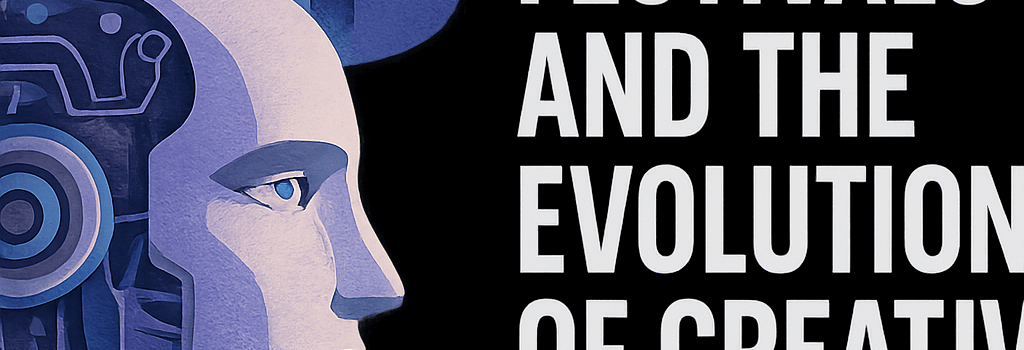AI Film Festivals and the Evolution of Creative Expression

Last month, AIFF 2025, the world’s first public festival dedicated entirely to generative AI shorts, convened in Santa Monica, California. Hosted by Runway, the event showcased ten boundary-pushing films, featured in-depth conversations with industry veterans, and exposed fault lines within Hollywood’s creative community. Below, we unpack the festival’s highlights, the underlying technology, industry reactions, and what this means for the future of human expression.
AIFF 2025: A Festival at the Crossroads
Runway CEO Cristóbal Valenzuela curated panels where AI researchers, visual effects supervisors, and studio executives debated the merits and perils of generative tools. Meanwhile, attendees—ranging from indie directors to AI hobbyists—experienced a full spectrum of reactions, from excitement to existential dread.
Festival Demographics and Format
- Public screenings attracted over 1,200 visitors, including press, technologists, and cinephiles.
- All ten films were under 12 minutes, with production timelines averaging four to eight weeks.
- Judges included Gaspar Noé, Harmony Korine, NVIDIA’s Richard Kerris, and Jane Rosenthal of Tribeca Enterprises.
Showcase Films: From Dreamcore to Documentary
The festival lineup spanned highly abstract AI-generated dreamscapes to narrative-driven AI-assisted documentaries. Two films ultimately captured top honors:
- Grand Prix: Total Pixel Space by Jacob Adler
- Gold Prize: Jailbird by Andrew Salter
Total Pixel Space: A Philosophical Artifact
Total Pixel Space presents a 3D-animated lecture on the mathematics of image possibility spaces. Using a customized version of Stable Diffusion v2.1 fine-tuned on a curated 50,000-image dataset, Adler generated sequences demonstrating that the number of potential frames exceeds 10180. Rendered at 24 fps in 1080p, the film leveraged Runway’s multi-GPU inference pipeline (NVIDIA A100) and real-time interpolation to achieve smooth transitions between frames.
“Every frame of every possible film exists as coordinates waiting to be discovered,” says the narrator, echoing foundational concepts in combinatorics and information theory.
Jailbird: AI as Empathetic Lens
In Jailbird, Salter used Runway’s motion-guided video synthesis and depth estimation models to reconstruct a chicken’s viewpoint inside a UK prison. By combining semantic segmentation with frame-by-frame rotoscoping in Adobe After Effects, the team created dynamic shot extensions—some up to four seconds longer—at a fraction of traditional VFX costs.
Technical Foundations: How These Films Were Made
Most entries employed a hybrid pipeline:
- Data Preparation: Curated datasets of 10–100K frames, organized by style and theme.
- Model Fine-Tuning: Adapters on backbone architectures like U-Net and Vision Transformer (ViT) for style consistency.
- Inference & Post-Processing: Multi-GPU clusters for batch generation, followed by temporal coherence fixes using optical-flow algorithms.
Model Architectures Behind the Scenes
While many attendees know the buzzwords—GANs, diffusion models, Transformers—the true magic lies in ensemble approaches:
- Conditional Diffusion: Enables frame-by-frame control over composition and lighting.
Technical spec: 1,024×1,024 resolution, 50 inference steps, CLIP guidance with a 0.7 weight. - Neural Radiance Fields (NeRF): Generates 3D volumes from 2D prompts for immersive animations.
- Temporal Consistency Networks: Custom LSTM-based layers enforce smooth object motion across frames.
Legal and Ethical Considerations
Behind the spectacle lies a thicket of copyright litigation. Several lawsuits allege AI models were trained on unlicensed content, including millions of YouTube video frames. Runway has responded by offering indemnification clauses to studio partners and implementing automated watermark detectors to flag near-duplicate outputs.
“Our priority is output integrity,” says Valenzuela. “We use perceptual hashing and similarity metrics (SSIM & LPIPS) to ensure we’re not regurgitating existing works.”
Industry Reactions: Two Hollywood Perspectives
Even within the same department, opinions diverge:
- Senior VFX Artist: Uses AI for rapid pre-visualization, cutting initial edit time by 40%.
“I can iterate camera angles in hours instead of days,” they report. - Independent Director: Views generative AI as a threat to originality, concerned about workforce displacement.
“It’s a buzzsaw that eats creativity,” they warn.
Future Trajectories: What Comes Next?
Experts predict a bifurcation in adoption:
- Mainstream Studios: Will integrate AI for VFX, color grading, and subtitle generation—areas with quantifiable ROI.
- Indie Filmmakers: Will push creative boundaries, using AI to realize visions previously limited by budgets.
Parallel developments in cloud computing—such as serverless GPU clusters from AWS and Google Cloud’s Vertex AI—will lower the barrier to entry further, offering pay-as-you-go rendering at sub-$0.50 per minute of 4K footage.
Conclusion: The Philosophical Mirror of AI
Total Pixel Space posits that all images preexist in mathematical space, and artists merely collapse these possibilities into reality. Whether you see this as liberation or determinism, the outcome will be decided not in lecture halls but at negotiating tables—through contracts, court rulings, and new compensation models for data contributors. In this era, creativity may hinge as much on legal frameworks as on artistic inspiration.